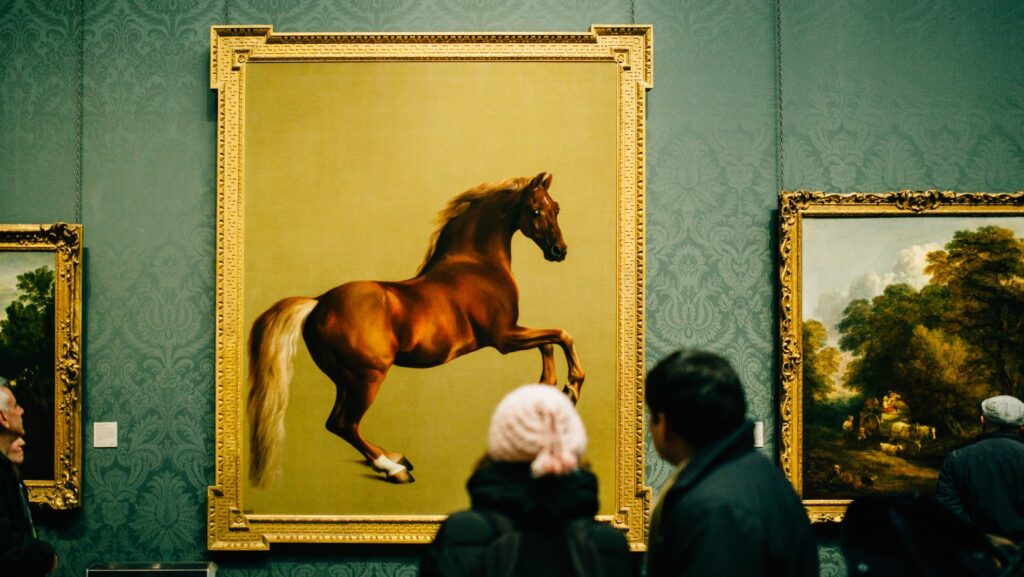In the world of investment, there’s an intriguing player that often gets overlooked – art. It’s a sector that’s not just for the aesthetically inclined, but also for the financially savvy. As the traditional markets become increasingly unpredictable, many are turning their eyes towards art, intrigued by its potential as a sound investment.
But is art truly a good investment? Can a Picasso or a Warhol really provide the financial returns one seeks? This article aims to shed light on the often overlooked aspect of art as an investment, exploring its potential, the risks involved, and the factors that determine its value in the market.
The Rising Popularity of Art as an Investment
Driven by several appeal factors, art increasingly attracts investors. High returns, diversification prospects, and aesthetic enjoyment contribute to its mounting popularity. Art, boasting an annual return of 10.6% from 1985 to 2020 based on Artprice’s Global Art Market report, outpaces many traditional investment options.
 More investors, both seasoned and new, find allure in art’s potential for portfolio diversification. Art, not tied directly to stock markets, offers a hedge against economic downturns and can cushion portfolio volatility. Yet, it’s the enticing mix of finance and aesthetics that truly draws the crowds. Investors, also art enthusiasts, derive intimate pleasure from art ownership, amplifying the overall appeal.
More investors, both seasoned and new, find allure in art’s potential for portfolio diversification. Art, not tied directly to stock markets, offers a hedge against economic downturns and can cushion portfolio volatility. Yet, it’s the enticing mix of finance and aesthetics that truly draws the crowds. Investors, also art enthusiasts, derive intimate pleasure from art ownership, amplifying the overall appeal.
However, art’s very nature – subjective and elusive – has some inherent risks. Prices can fluctuate wildly based on subjective factors like public sentiment, artist reputation, and current trends. Experts recommend thorough research, seeking professional advice, and verifying authenticity before making any art investment.
Despite the challenges, data shows an upward trend in art investment numbers. Artnet reported a 4.8% increase in the global art market in 2019, reflecting the strengthening position of art in investment circles. As traditional markets display uncertainty, art emerges as both a refuge and an opportunity. The rise in art as an investment, thus, continues unabated.
Is Art a Good Investment
Art markets offer a distinctive platform for investment. Operating on a global scale, they link buyers and sellers allowing transactions of art pieces. Auction houses such as Sotheby’s or Christie’s, high-end galleries, art fairs, and online platforms are often at the center of these transactions. They host art collections for display, price negotiation, and final sale.
 Factors influencing art market prices include artist reputation, art piece history, rarity, and aesthetic appeal. These factors often vary, defining the price of an art piece. For example, artwork from a renowned artist with an established market presence often fetches significantly higher prices, while a piece from an emerging artist might appeal to investors seeking high-risk, high-reward opportunities.
Factors influencing art market prices include artist reputation, art piece history, rarity, and aesthetic appeal. These factors often vary, defining the price of an art piece. For example, artwork from a renowned artist with an established market presence often fetches significantly higher prices, while a piece from an emerging artist might appeal to investors seeking high-risk, high-reward opportunities.
Art market fluctuations raise unique challenges for buyers and sellers. Value unpredictability and subjective pricing means investments aren’t as straightforward as traditional markets. Requiring specialized knowledge and a keen eye for potential, art markets present a set of dynamics investors need to understand prior their engagement.
Yet, investors can also find potential for exceptional returns in art markets. Driven by collectors’ willingness to pay premium prices for artwork that resonates with them, strong returns make art a viable investment alternative. According to Artprice, the art market achieved annual gains of 8.3% between 2000 and 2018, outperforming stock markets. Bold returns like this underline the potential within art markets, making them an intriguing destination for investors.
Comparing Art Investment with Other Assets
Paralleling art investment with more traditional assets unveils both shared and unique aspects. Stocks and bonds, realty properties, and other tangible assets, for example, generally offer consistent returns with lower volatility. Art, however, maintains a separate allure due to its dual nature – a captivating aesthetic value and a potential economic yield.
 Notwithstanding similar risks, such as market fluctuations and liquidity concerns, art investments are starkly different. Unlike traditional investments, they derive their intrinsic value primarily from cultural significance and artistic merit. Furthermore, art investments generally need a considerable appreciation period, often several years or decades. While a banner year on the stock market may illustrate a 20% return, a particularly well-bought piece of art can offer multiples of that over time.
Notwithstanding similar risks, such as market fluctuations and liquidity concerns, art investments are starkly different. Unlike traditional investments, they derive their intrinsic value primarily from cultural significance and artistic merit. Furthermore, art investments generally need a considerable appreciation period, often several years or decades. While a banner year on the stock market may illustrate a 20% return, a particularly well-bought piece of art can offer multiples of that over time.
In a nutshell, while art presents unique rewards, it’s not entirely comparable to traditional investments. Ergo, diversified portfolios often balance art with other assets, coupling potential high returns with reliable stability. An investor’s risk tolerance, patience, and propensity for due diligence are key to navigating this niche market.

